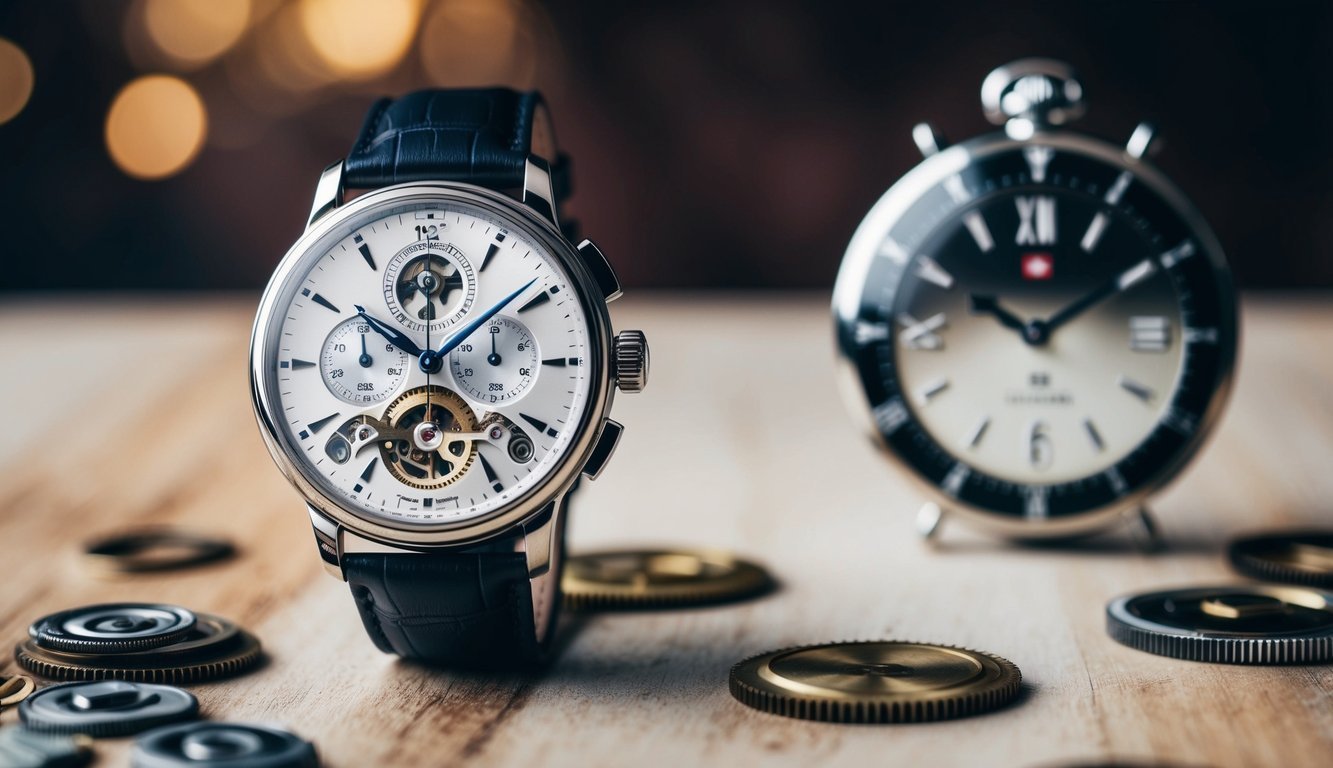A Rich Start and the Weight of History
Mathey-Tissot, often overshadowed in the world of Swiss watchmaking, deserves a spotlight that aligns with its contributions and innovations.
While it may sound similar to the more prominent Tissot, Mathey-Tissot has created its unique path in horology, one that encompasses a rich history and anticipates intriguing challenges ahead.
The story of Mathey-Tissot began in 1886, thanks to the talented Edmond Mathey-Tissot, who set up shop in Ponts-de-Martel, Switzerland.
In its early days, the brand gained acclaim for its intricate complications, particularly its revered chiming minute repeater pocket watches.
Military contracts, including a significant order from a British regiment during the South African conflicts, propelled the brand into the spotlight, establishing a long-standing connection with military clients.
As timepieces renowned for their precision, Mathey-Tissot watches soon became favored by soldiers.
The brand’s commitment to accuracy earned it prestigious accolades, including “Class A” ratings from the Kew Observatory Competition in London.
This level of recognition positioned Mathey-Tissot among Switzerland’s elite watchmakers, celebrated for crafting some of the finest watches available.
The onset of World War I offered additional opportunities for growth, as Mathey-Tissot’s chronographs became trusted equipment for the U.S. Army Corps of Engineers.
The brand’s reputation solidified further when General Pershing gifted Mathey-Tissot watches to his staff, and during World War II, it supplied thousands of timepieces to American and British forces alike.
In the following decades, especially during the 1950s and 60s, Mathey-Tissot played a crucial role in creating the celebrated Type XX chronograph, commissioned by the French Ministry of Defence.
This dual-register, flyback chronograph became an indispensable tool for pilots and also won over civilian enthusiasts.
Mathey-Tissot partnered with Breguet for certain models, and today, vintage Type XX watches command impressive prices, reflecting the brand’s strong military heritage.
Cultural Resonance and Royal Ties
The 1960s and 70s were significant for Mathey-Tissot, as the brand became increasingly popular among ordinary consumers and celebrities alike.
Elvis Presley, for instance, commissioned bespoke watches for his inner circle, featuring his name on the bezel and accompanying certificates that offered exclusive access to his private events.
This connection with the King of Rock and Roll undoubtedly enhanced the brand’s allure.
In contemporary culture, Mathey-Tissot’s reputation is further underscored by its appearance in Martin Scorsese’s film *The Irishman*, where the character Jimmy Hoffa presents a luxurious, gem-studded Mathey-Tissot watch to Frank Sheeran.
This narrative moment illustrates how timepieces can symbolize power and status within storytelling.
A Vision for Revival
As the saying goes, all good things must come to an end.
The 1990s marked a turning point for Mathey-Tissot, as the brand saw a gradual decline in visibility and prestige on the global stage.
The rise of quartz technology posed a formidable challenge, and unlike larger conglomerates, Mathey-Tissot relied heavily on its internal resources to adapt.
This situation prompted the brand to pivot toward quartz timepieces.
In response to shifting market demands, Mathey-Tissot began producing homage pieces inspired by luxury giants like Rolex and Patek Philippe.
Although this strategic move helped the brand to navigate turbulent financial waters, it also obscured its distinctive identity.
Despite facing numerous challenges, Mathey-Tissot’s loyal fan base cherishes its remarkable heritage as a powerful asset.
With Alberto Frigerio at the helm since 1994—and his passionate acquisition of the brand in 2013—the company has started to shift back towards celebrating its own legacy.
Exciting developments are on the horizon, including modern reinterpretations of the classic Type XX.
Partnerships with aviation-focused microbrands such as Hemel and collaborations with the Asian Mechanical Watch Group aim to relaunch authentic 38mm Type XX chronographs in both quartz and mechanical formats.
The brand is also revisiting iconic models like the 1970s Mergulhador diver watch.
Though these initiatives signal positive growth, Mathey-Tissot must streamline its extensive catalog, which boasts around 500 references across various collections.
Recent moves in the industry, such as Breitling’s acquisition of Universal Genève, suggest that storied brands like Mathey-Tissot have the potential for revitalization.
As Mathey-Tissot looks toward the future, its supporters remain cautiously optimistic about a renaissance that honors its illustrious past while reestablishing its place in the competitive world of watchmaking.
Source: Timeandtidewatches


